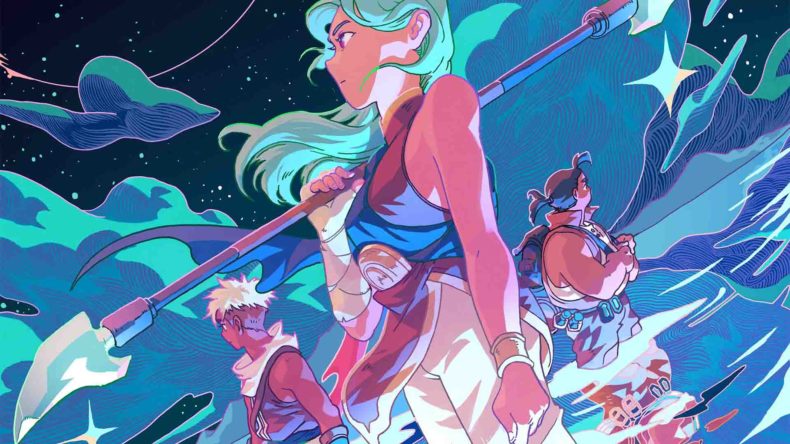Sea of Stars released last month, and for fans of those classic SNES RPGs it was a dream come true. The combat system involving elemental locks means that battles require some serious thought, and nothing feels better than nailing the button timing to boost a moves’ power. I enjoyed every minute I spent with Sea of Stars, and was more than happy to give it a ten out of ten in my review.
Sabotage Studios created an RPG that will not only be high up on my personal game of the year list, but is also one of the best RPGs I’ve ever played, and I’m not alone in this opinion. I was lucky enough to get the chance to talk to Creative Director Thierry Boulanger all about the creation and reception of this indie megahit, and he was just full of wonderful trivia about the development process. This is one exclusive interview that you don’t want to miss.
Sea of Stars released recently and has received almost universal praise from fans and critics, how does the team feel about this reception?
The team feels great! We all got together, we rented a big cabin to party for four days straight and we had the launch on the first night. We have some people from different countries from the team so we flew them over and we all got to be together. And then we woke up to the reviews the day before launch and we had dinner. Then we all pressed the button to release the game together, and then the next day we just kept watching streams and then looking at even more reviews coming in. It’s been an actual dream.
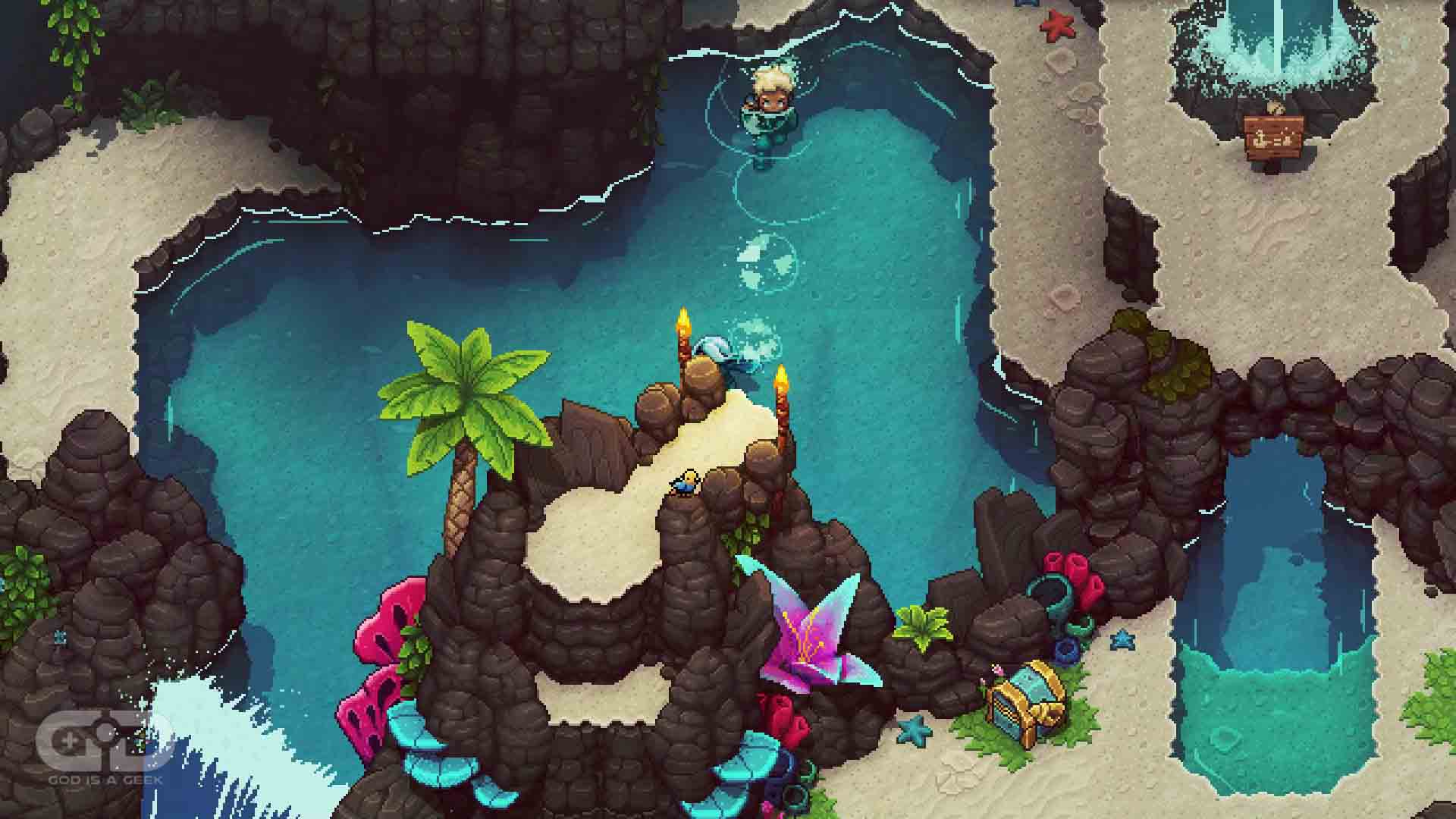
The move from an action platformer like The Messenger to an RPG like Sea of Stars feels like a hell of a genre shift. What was it like moving between such different games?
We didn’t necessarily feel like it was a big shift in terms of tenets. The way we approach game design, direction and vision could sort of apply if someone said “hey you guys make a versus fighter now”. I think regardless of genre there would be the atoms of how we make games. You would find them in there, because we always start from nothing and every single system is added.
There are a couple of these very simple sound bytes I like, and some of them really make sense when you meditate on them for a bit. One that I really like is “perfection is when you can’t remove anything anymore”. And so instead of just going “hey we’re going to make an RPG. There’s got to be shops, there’s got to be equipment.” there was none of that at first. At first we just started with just moving around and fighting, and there wasn’t even XP. We were hitting the limit of the theoretical juice that we could get out of all those systems, and then we added in all these things one by one as we discovered for ourselves why they made sense and resonated with all the others. While also making sure we implement the leanest version that’s the most in tune with the rest of what we have within the game.
So that gives you things like for a concrete example, how low the cap on money is. You play Sea of Stars and you don’t end up constantly getting money and money and money, and in the end because of that the shopping experience isn’t just “are there more digits in my wallet than on that item in the shop?”. You get to have a sense of what 90 gold coins mean within that game. So when you get a reward instead of it just being a blur of “sure whatever”, you kinda keep this connection. Elements like this also help in terms of pacing the items. We don’t start with a list of all the swords that would be cool and then retrofit that into however many levels you’re going to have. It’s really gameplay first in every single implementation that we do.
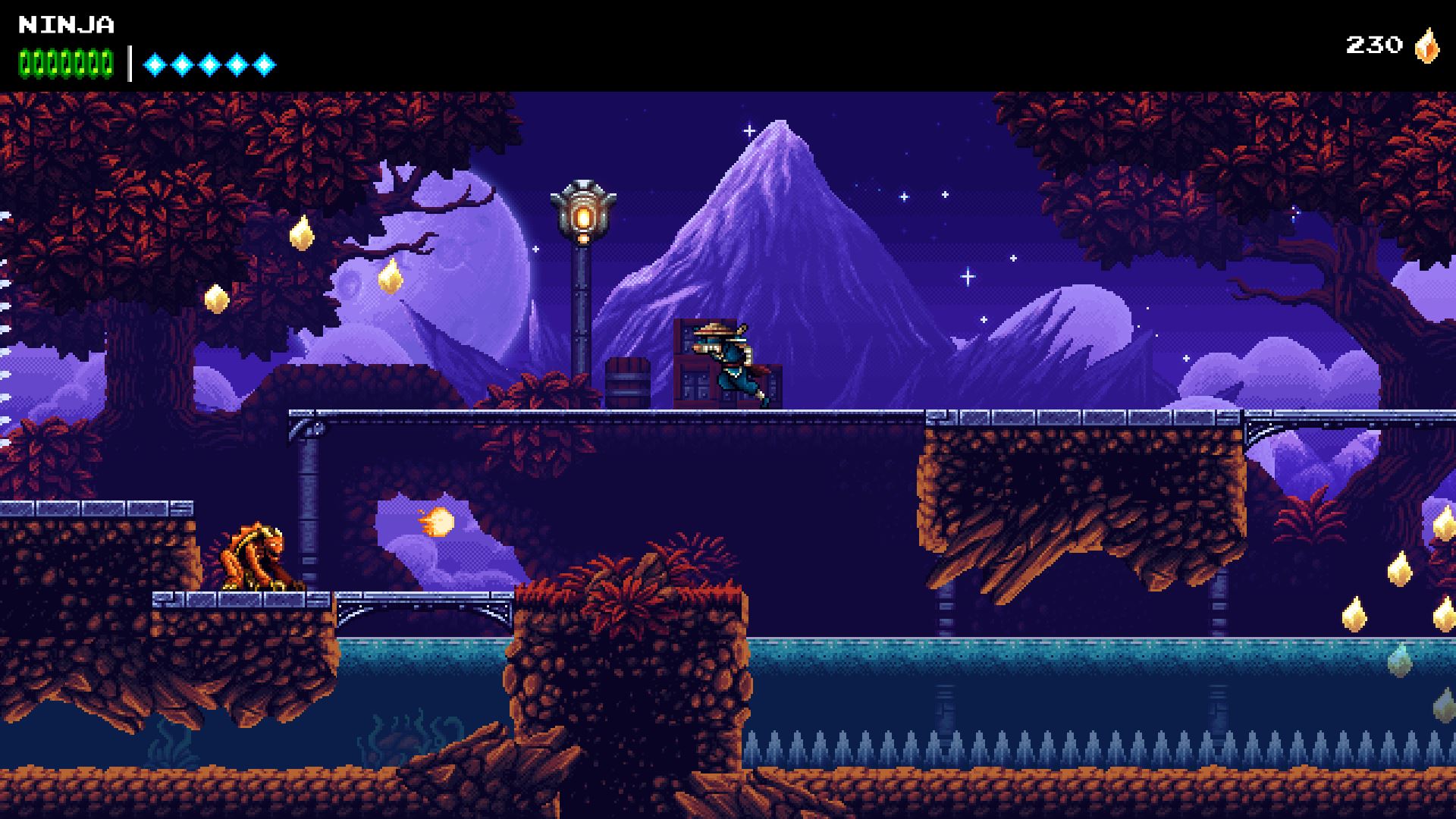
With the DLC of The Messenger only four years old, when did the studio decide it was going to make a turn based RPG next?
If we go back to the origins of Sabotage, I’ve been building this fantasy world in my head since I was in elementary school. And in that world, because all of our games are set in the same universe, there are some main arcs. And all these main arcs are each game. So The Messenger makes sense narratively because it only has one character, and it wouldn’t be a turn based RPG with just one guy you know? That demands a party. And likewise we’re not going to make a side scroller with an entire party. So it’s kind of like the gameplay and genre we pick is the best way to tell that story if that makes sense.
We knew we wanted to make Sea of Stars originally as our first game, but we also knew that we didn’t have the cultural clout or the budget or ability to pitch with any sense of “no we can handle a scope like this”. We didn’t have the size of the team. I couldn’t have bootstrapped the studio with a team of 25 people and a big production. It was so much to worry about. So The Messenger was kind of like a leaner project, it’s also a simpler proposition for new players who don’t know us. So we spring boarded off of that to be like “okay so here’s the big idea that we wanted to make”. We love both of our games that we put out, but when the company was founded there was an understanding from everyone that Sea of Stars was the dream project that we’d get to make if we could make the first game work.
So we launched The Messenger, we took a break. And then six weeks after the release of The Messenger we had a summit, sort of like a workshop/get together with everyone. And I pitched The Messenger DLC and Sea of Stars and we started working on both. Because you know we don’t want to fire people between productions or anything like that, so a good way we have to deal with that is to have the production pipeline established for The Messenger. So everyone works on making more content for that game. There are very few unknowns in how to make that work, even though we did try to revamp some things in the mechanics. While that’s happening we take the smallest team possible, only the key players that you need, and start doing the groundwork and making the toolset for the next big production and then that goes on for about a year. Then when the DLC releases, the next major production is ready for the rest of the team and then we all work together. And now the same thing will happen a few weeks from now where I will pitch our next game and the DLC for Sea of Stars and we’ll do that thing again where we get to keep everyone.
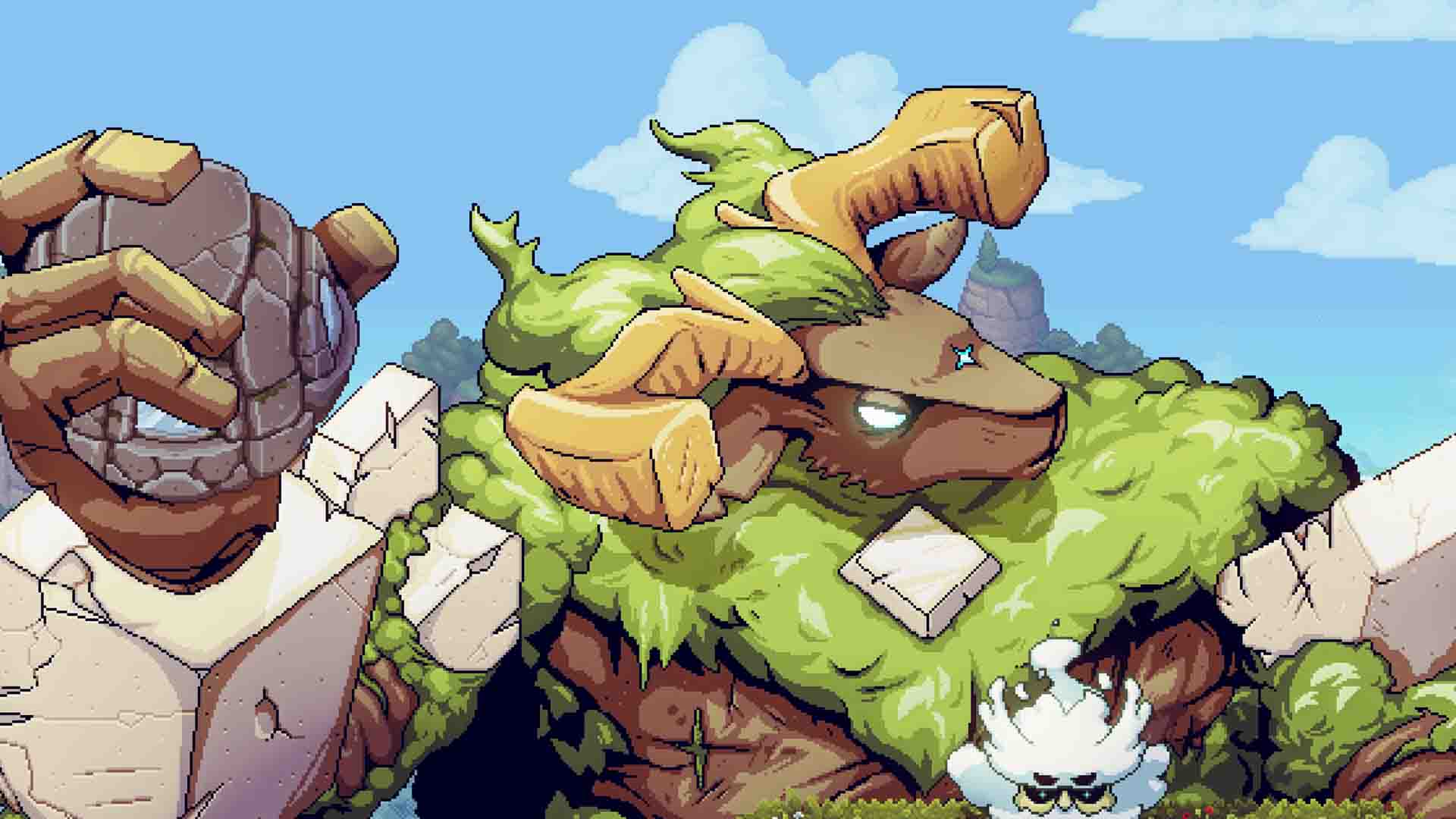
Is there any small teaser you can give us about the DLC for Sea of Stars?
Absolutely. So we announced it already on Kickstarter, one of the stretch goals was that we would have all the DLC included free for backers. We hit all the goals and the last one was that we reveal the name of the DLC and it’s added as a bonus for the backers. So it’s called Throes of the Watchmaker.
There’s a character in Sea of Stars who you may know is called The Watchmaker. She’s this clockwork genius toiling away in a room where time doesn’t pass. And she’s very private and reserved and won’t really talk much, but the DLC will flesh her out a little bit. So that’s the first one, and there’s also an idea for a second DLC but it’s hard to tell where we’ll be in regards to game three and also in terms of response. We don’t want to overstay our welcome with Sea of Stars, and maybe it could end up being better to let it be. We’ll see how things shake out, it’s too far in the future to tell.
On the other end of the spectrum do you see yourself ever revisiting The Messenger with any additional content, perhaps because of the popularity of Sea of Stars?
I wouldn’t say it’s off the table, but for now there’s no plans for that. We still want to make a kind of definitive edition to add some quality of life and things like that, but yeah we’ll see.
Will we see more from this universe, and if so, what about Teaks and the other characters from Sea of Stars that are part of the bigger universe?
I don’t really want to talk about the ending because I guess it’s a bit intense for an interview. But it’s kind of understood that Teaks has had her own journey in between what we see, so it’s not impossible that some of that might be told at some point. I think where we’re at there is a lot more to tell about all of the characters, but I have to keep a lot under wraps here.
One thing that’s for sure is that all of our games are in the same universe, and they are approached to be enjoyable as a standalone thing. But they also plant seeds and give you things that if you play any of the others you’ll be like “oh yeah I got that one”. But you can also do it in reverse. We’ll see for how many games we can fully make sense of them equally feeding into all the others. But in terms of seeing more of that world and unravelling how it works, yes, that’s why we’re a company.
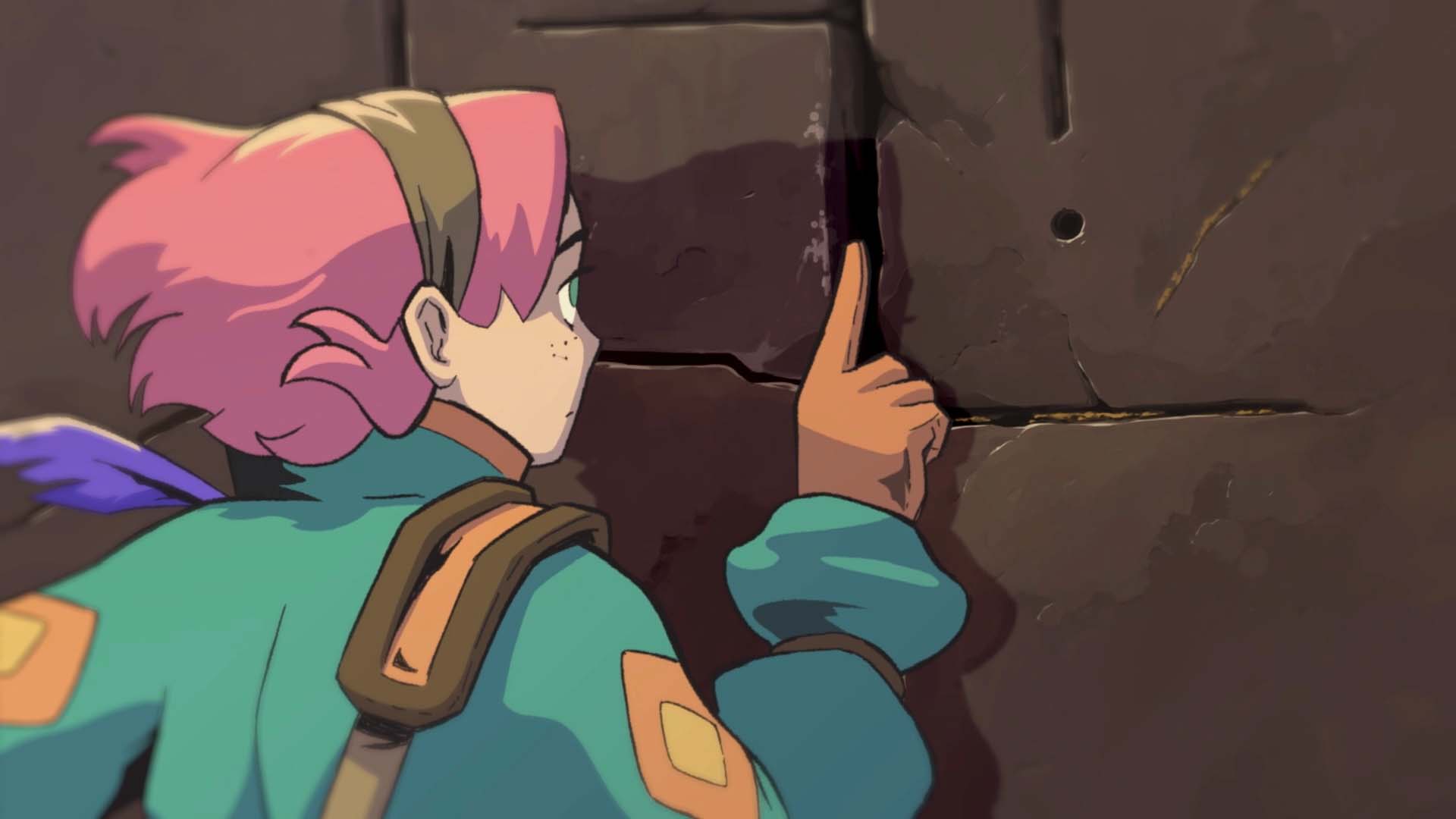
Sabotage Studio has grown from having 7 members to 25 in the course of developing Sea of Stars. How did that affect development?
I will say that 25 is probably where we leave it. Like I don’t see it at 40 people. The way we work I don’t think there’s a framework for how we operate as a team that large. But we only look at the results right, and so everyone that we work with and who joins the team is genuinely driven to push their craft, hone their skills and be proud of what they made. Then as a team we have objectives that we want to stay on track with, but we don’t manage people.
For example we’ll say that we’re going to PAX in April, so we need a demo and we’ll be showcasing the dynamic lighting. Do you feel like this is something that can be on that level by then? Yes. Okay. If you don’t come in the next day, nobody calls you or says “hey you were supposed to work on this”. We just operate 100% on trust, and if someone simply just doesn’t feel like working one day, then just don’t work. Because we want everything that goes into the game to really come from passion and to come from a genuinely deliberate effort to make it better.
We are in a position where the vibe that we have is that no one ever says “oh you weren’t here.” “You didn’t do that” “I had to do this”. It’s kind of like the other way around. Where people are like “Oh man the new music track came in and it’s so good. I want to rework that background for the art because it needs to be on par with that”. We kind of have this sort of, I wouldn’t say competition, but like a healthy one upping one another constantly. That doesn’t turn into crazy hours.
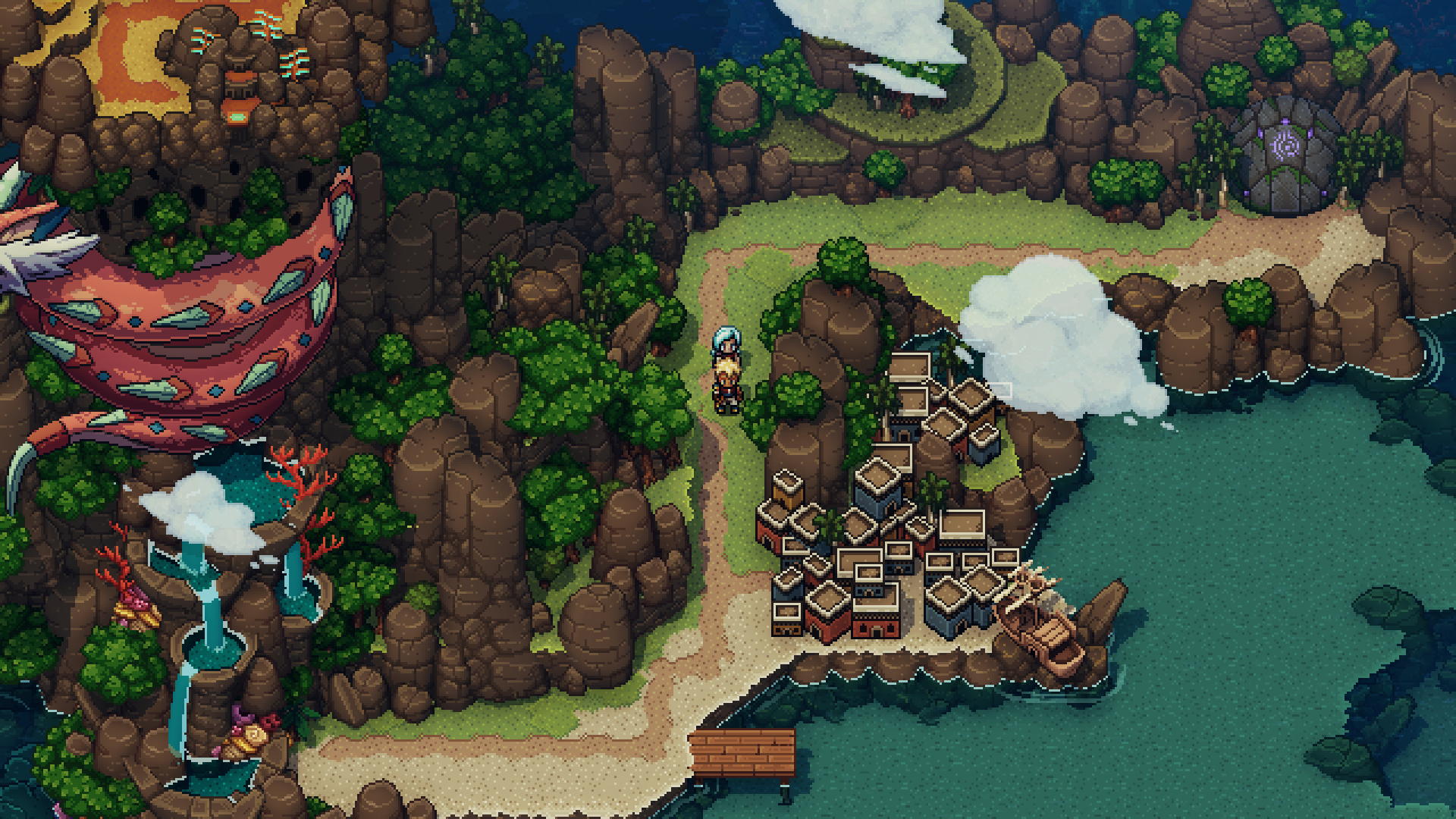
I’d say that’s the one superpower that we have I think too, that we haven’t ever had to completely scrap any of our ideas. When you make a video game you make everything eight times, and there’s no way around that. At least in my fifteen years as a dev that’s what I’ve seen, you do everything eight times. A lot of what happens in doing those things eight times, if I look back to working for clients and things like that, is that the first six times that you redo something you start from scratch. Because the idea was a bit incomplete or it wasn’t vetted enough, or because we tried to save time in that initial kickoff meeting. So then we go to implement it and the rubber meets the road and here’s a blatant flub, and we’re like “argh let’s do something else entirely”.
Well that’s one of eight times spent that you don’t keep anything from to inform the end result. And I think that’s one thing that we do really well, is that in that first step we always make sure that what we make the actual thing that works and that we’re ending up with no matter what. Then we use those eight iterations, and this is an average of course, to polish, to elevate. So I think that’s a very big part of how we don’t have feature creep. We don’t have things that are stuck in dead ends. We don’t have things that no one wants to touch anymore. In terms of growing from 7 to 25 there was this concern, and it’s also why we’ll never be 40, is that it becomes hard if you add a lot of people to make sure that everyone is on that same page and cut from the same cloth in terms of “I’ll put in the time even if no one is checking”.
There’s also a shared understanding of what has precedence. So let’s say we’re looking at the first Prince of Persia, the very first one. So let’s say I filmed my brother and I rotoscoped everything and I’m gonna make the most smoothly animated thing that the world has ever seen. And that’s what he did in terms of a video game. It was great. What that means in terms of production is that if you’re looking for snappy controls and responsively gameplay, that that’s not the game for it. It’s a display of animation. So you try to turn around and your character is just always turning and you’re waiting for the animation to end. What that means is that imagining that was made by a bigger team, they’d have had to have a conversation about that. Like they’d prefer tighter controls, but from a creative direction perspective I assume they would’ve said “well for this vision animation is more important than in responsive controls. And so in this case we’re good, we don’t want better controls because the cost of that would be to jump cut the animation and that’s not the vision”.
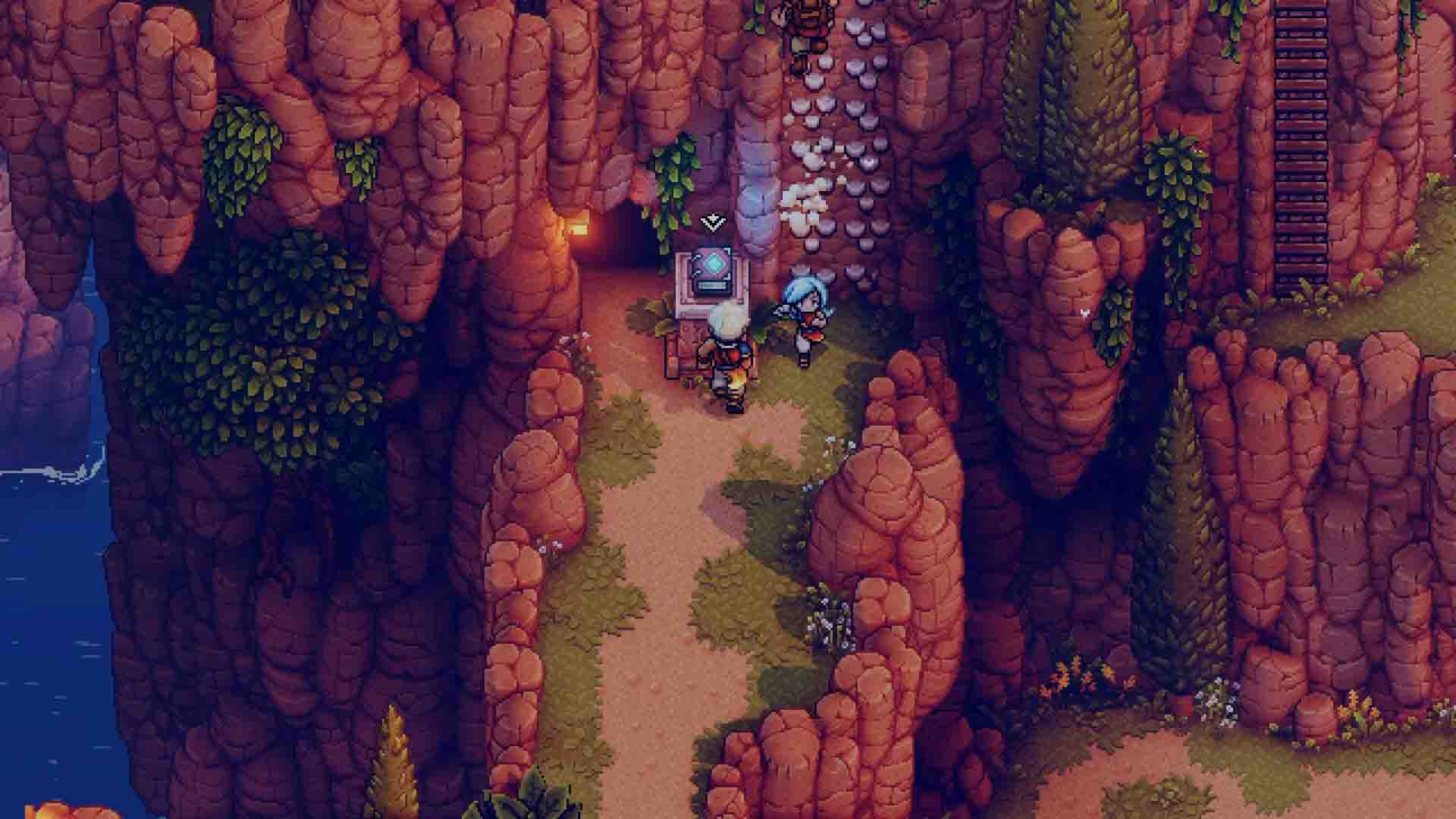
So when you have a big team your V effects artist will always want the best V effects possible all the time in every single situation. And that’s also true for the sound effects person, and for the physics programmer, and it’s also true for the background artist, and it’s true for everyone. So I think what we have,and what we’re really lucky to have, is that despite the team being really big everyone understands the order of priorities if you will, in terms of the end vision. For example the level artist could say “well that area would be way more beautiful with a big tree in the middle” and you’re like well yes but we happen to have a fight going on here and we don’t want to clip through a tree. Well then that person happens to go “right I get it, end of conversation, let’s get back to work and I’ll do my best to make it beautiful while paying respect to the fact that this needs first and foremost to be a battle arena”.
So a lot of what I’ve seen of teams in other places is that people are just fighting for their thing without developing a broader understanding of what makes the game. So because we kind of ranked what precedes what and when, if there is a conflict it’s less of an issue. Everyone wants the best art possible, but if it’s going to be at the cost of gameplay it’s understood that that’s what needs to take a hit. So we kind of all gather around this and as the creative director there is so much less friction whenever someone needs to demonstrate some give for it to sing properly.
I think that’s also how we got those results despite the team growing a bit, because everyone really played ball in terms of “it’s not time for me to play a solo here? Cool”. But then they still do get their moment and they go to town when it’s their turn. But I wouldn’t see it scaling, if we were to scale up I don’t think I’d have very high confidence that we’re still going to have that velocity and vision that we all share, and that everyone would be driven. I mean it’s probably possible, but I felt pretty busy and my schedule was pretty full with just 25 people checking in with iterating and polishing, and trying to give advice and inspiring everyone. As well as just making sure they’re okay personally and how they’re doing is all factored in. I think that’s pretty much the cut off of what I can take.
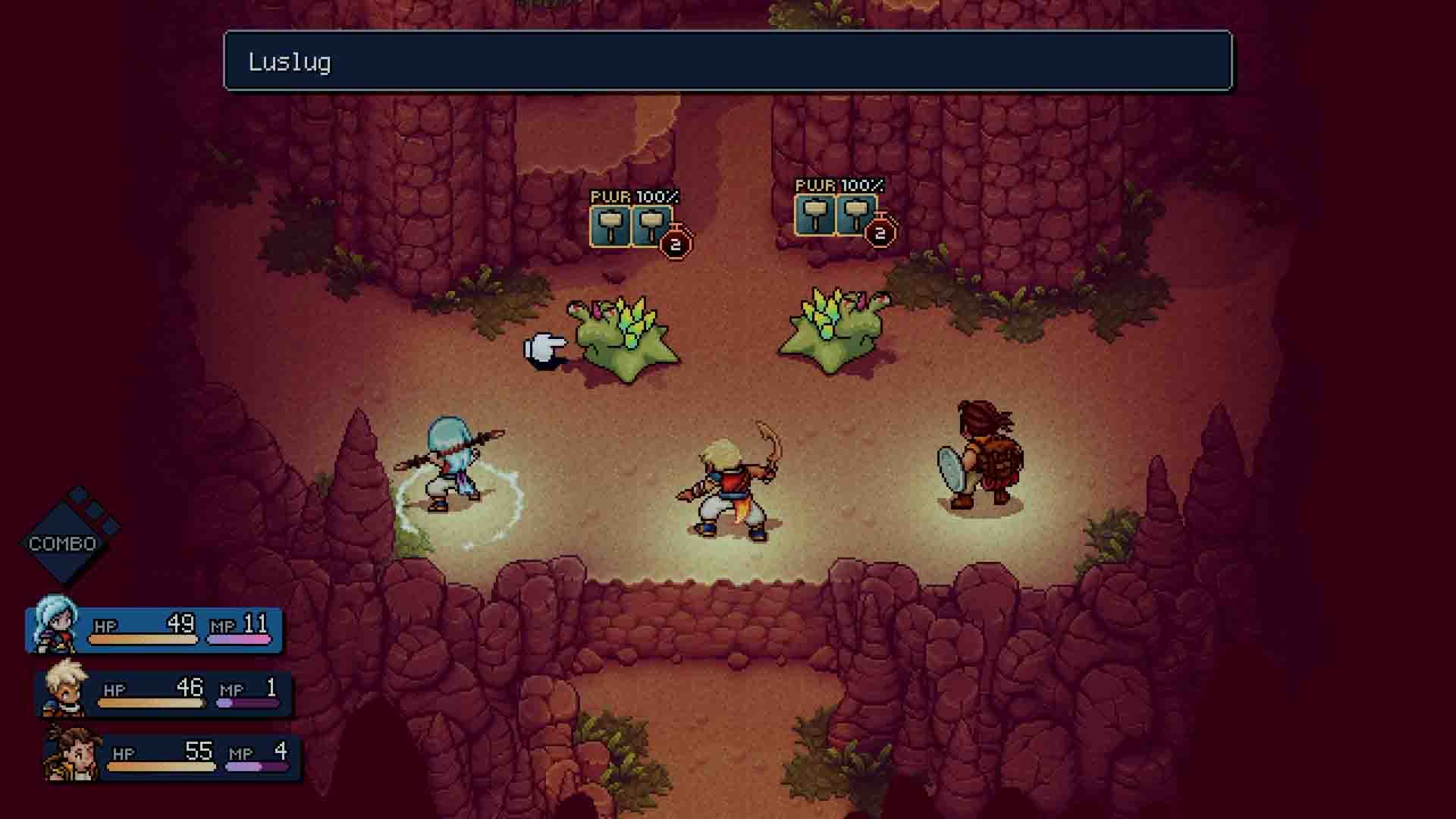
All of us here at GodisaGeek feel that Garl is the heart and soul of the game. How did his inclusion in the game come about, and did the team know he’d be so important to the people playing the game?
He’s a special one for sure. I don’t know, even though I kind of came up with the name and the notes of how to kinda approach designing him, it happened. It was one of these where Bryce our concept artist will always do three propositions for anything we need. I’ll say I need a flower monster or whatever and he’ll send me three things, and I’ll say oh I kinda like this one but can we tweak it in this or that way. Or it’ll give me even more ideas. With Garl I just kind of made this one sketch and I just felt like that was the guy.
There was this thing for everyone developing in the game, and he’s the only character in the whole game where this happened for everyone on the team. Everything we made to do with Garl just happened on the first initial instinct, the first attempt. It was just like yeah this is it, it just makes sense, it just feels right. He was for me the easiest to write in the scenario, and even though I was trying to make someone who could be wholesome and be this presence that lets you take other things in, even while I was writing him whenever he was in a scene I felt better! I felt good that he was there. I will just say that I agree that he’s the best.
My favourite thing about him that nobody else will appreciate is that he doesn’t have innate magic right, he’s the only one who won’t have one more damage type when does things. So when he boosts he still gets a portion of magic attack to his next move but since it doesn’t add a damage type it still checks against physical which makes him the truest dealer of true damage. I feel like that’s pretty cool even though no one will understand this!
It would be hard for me to explain how he happened because he was just such a great presence for everyone on the team, he just happened! Even his song, his theme is a super happy track. So I asked Eric and I just said sorry man for Garl I’ve got nothing, he’s just like the purest character we’ll probably ever make and we need his theme to be bottled happiness. That’s all I gave him. I was like sorry man I’ve got no references to send, I have no direction other than bottled happiness and he just made that track. I’m sure it took him a while, but he just sent it and I was like wow no way it’s perfect. He just fell into place, he’s a special character for sure.
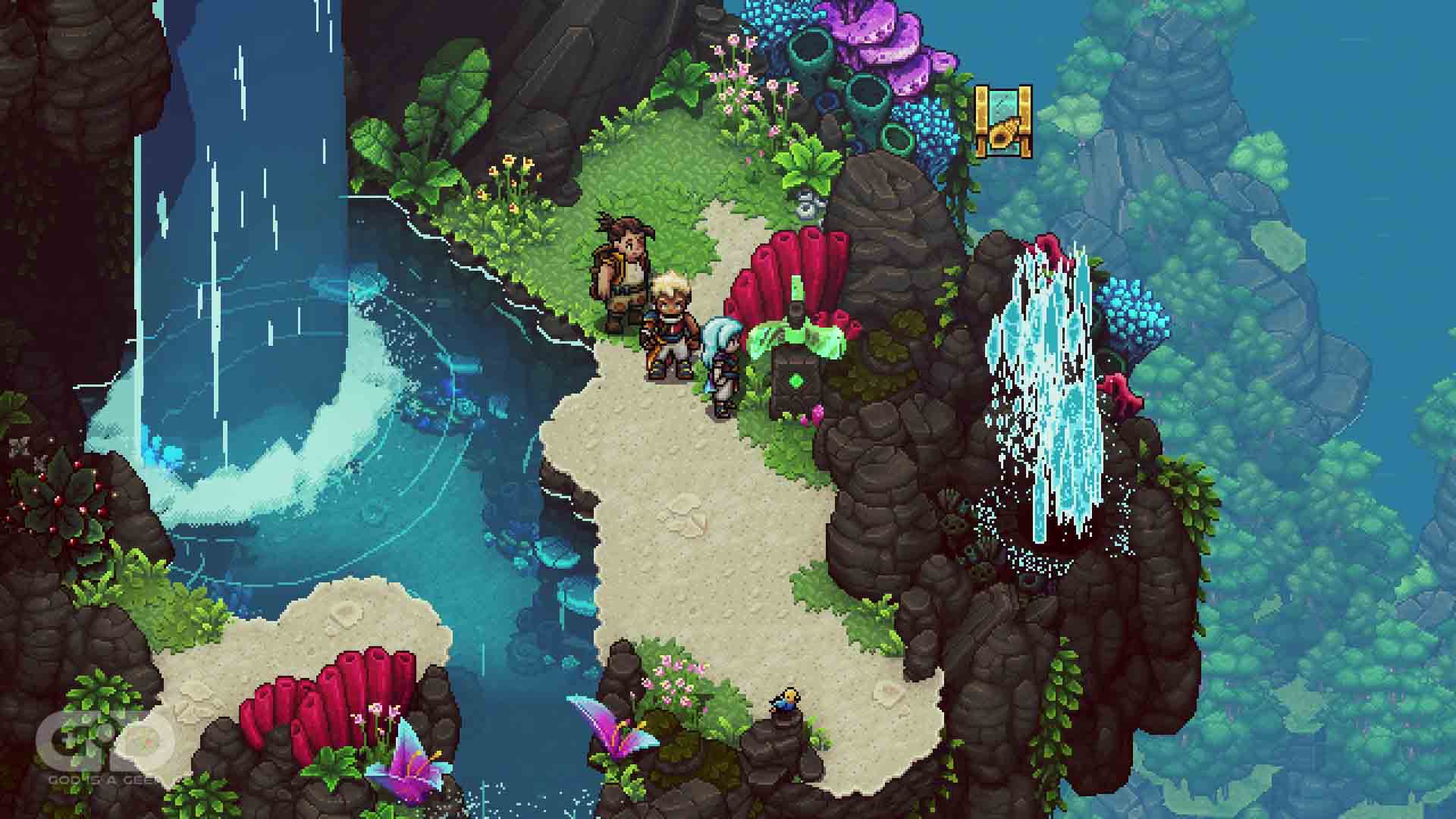
Although there’s a whole lot of peril in Sea of Stars, the vibe of the game is just so positive. Was it important to you to create a game that felt joyous instead of something more moody?
Yeah absolutely. I think that it comes from the inner child, and it’s also an invitation to let your inner child out to play for a little bit. I think you could reject the proposition, you could be like “ah it’s a bit child-like and I’m not too sure about this game”, but I think if you get with it it’s a bit wacky but the idea was for the game to feel like a day off. Like if you’re playing games every single day like most of us, then when you play Sea of Stars it’s like your Saturday morning within your gaming career. So yeah it’s like a vacation for gaming, while you’re still playing games this one feels lighter and closer to the pure and simple notion that you just want to play.
It feels like Sea of Stars takes a little from all those classic RPGs we played growing up. Did any in particular inspire the game?
Oh yeah of course. So Chrono Trigger is why I do this for a living so it’s going to be in everything. I used to mention Chrono Trigger even in The Messenger conversations, because the things that that game does don’t necessarily have to apply to a turn based RPG. There are things that you learn if you analyse Chrono Trigger for a little while that you could apply to anything, to an FPS or whatever. So yeah that’s a very very big one. Then the fact that we directly made a turn based RPG. You know the seamlessness of combat was mandatory, it was the first thing from the pitch.
We were inspired by Super Mario RPG for the active battles where you get to press buttons to power up attacks, and that’s why there’s no time bars in combat. That’s one big difference from Chrono Trigger, it being fully turn-based. If you have time bars but you’re trying to press a button to time an attack and a menu pops up it kind of conflicts. Also the time bars kind of push you to choose your next action.
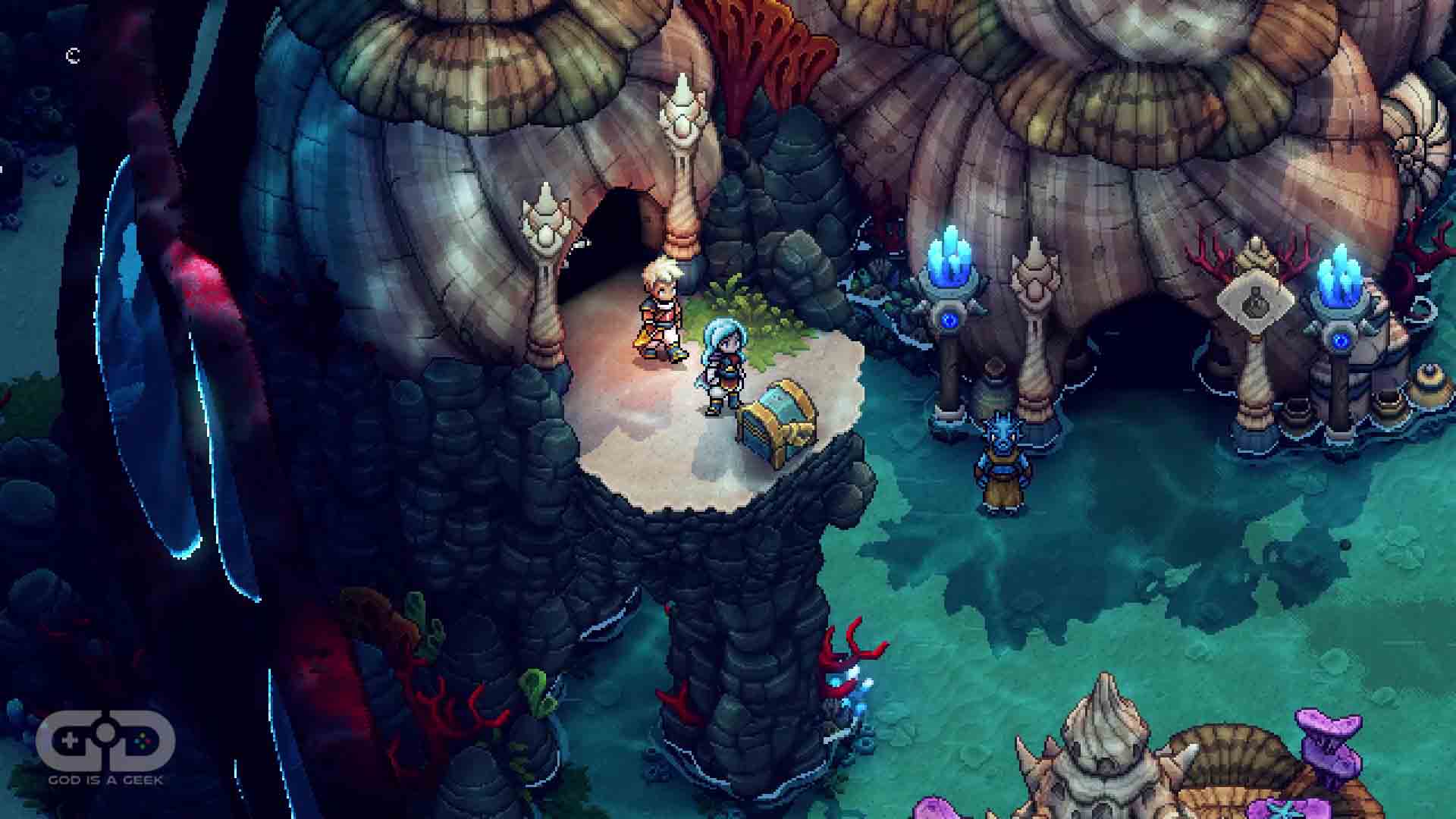
The idea of every combat kind of feeling like a puzzle and if you don’t fully understand what your attacks do in terms of damage types and attack patterns, turn based just makes more sense to let you feel like when you’re ready you can go. Also it removes variance. When you’re balancing your game variance will be where can the player fall, what’s the spectrum of where the player can be when they interact with your thing. And for example when you set the prices of the things in your shop your variance here is this, so it can’t be more expensive than this, it can’t be lower than that. And how do we make it more engaging for those who hoarded more and how do we not make people feel left out if they didn’t turn over every stone.
So you’re always managing your variance, and what I really liked about removing all the time bars is that it removed lots of variance. Because if you do have the time bars then you can have one character who takes two actions for every action of the boss and one who does four, then now it’s like okay how many hit points do you need for this guy to be challenging and fair for all options. So locking it into pure turn based, the variance now is “will you make the worst possible decision? Okay well we can account for that”. But the amount of actions because we’re playing with low hit points and how important each action is with the locks, removing the variance just means we increase the odds of most people having a good time and letting them feel empowered with the mechanics.
The combat in Sea of Stars has so many moving parts that work so well together, from attack timing and weapon locks to flashy combo moves. How did the combat evolve over the course of development, and when did you realise you’d hit the sweet spot?
So we started from pure turn based, with the active input, with the live mana boosting, and the locks, and the general idea that with every move there would have utility. So for example it’s not about having a heavy damage dealer, a mage, a healer, everyone each has a moment where they are “the key”. So it’s really more about the strategy, you’re not going to pigeon hole yourself and have your one character that always attacks and one that always supports, because you can only take care of your slice of the lock pie. That means that you invite in all the other characters and those that you’re less inclined to use, because you connect less with their design or something, they’ll still have moments where they just take care of a big problem and they start to grow on you in different ways.
The one thing that wasn’t there at first was the ability to use items in battle. The items were only as an outside of battle survival mechanic, and you had to use your skills to heal – and we might add a relic in to remove items in battle down the line to make it possible to play it that way. Also we are thinking of adding something where the campfires only healed you up to 50%. That’s the good thing about the relic system, we can add modifiers and new things to challenge people who want to play through again. So yeah the items were added and allowed in combat, but it was still balanced so that it was more of your emergency lifeline and not expected you’d need to use them. There shouldn’t be any fight where if you don’t use any items you can’t win it.
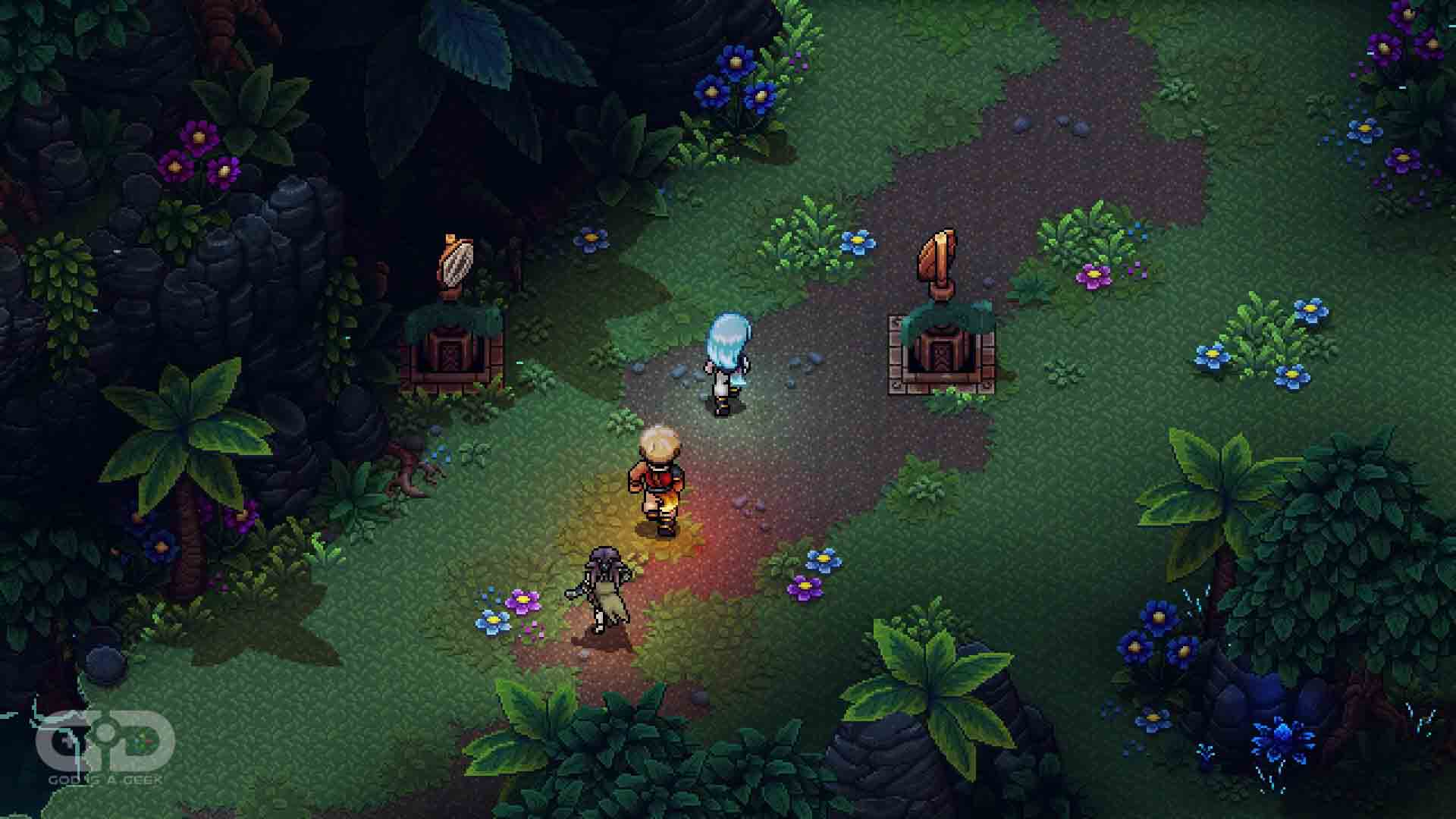
Are there any ideas that didn’t quite make the cut? Either combat related or otherwise?
Yeah okay, I’ll give one (laughs). So in the boat you know we have the drifting and all that. Do you know Cobra Triangle on the NES? It’s like an isometric boat game where you’re drifting and jumping and spinning in the air, and I was like “we’re doing that”. The ocean was basically a skate park and there was a grappling hook on the boat, so you could grab a part of the world map and just start spinning and when you released you’d get a speed boost. You’d have to land jumps to get to certain areas and stuff like that, and it was super involved and really fun. But then looking at it we were like “hold on, what’s the actual mental bandwidth that we want you to put into this”, it’s like that makes no sense at all. It was still fun, but we ended up cutting it. I still feel like a grappling hook on a boat is a great pitch, but we had to kind of remove all that for the sake of simplicity.
It’s like we don’t want you to start getting involved in something that’s too complex before you get to the next thing, we want the game to be about the characters and we shaped the game in that way. Other than that no, I would say everything made it in. We did the eight iterations on everything, so there were things we didn’t keep from that. For instance there was always going to be the locks system, but it didn’t have the hindering, power removing mechanic for partially breaking them. You either broke them or you didn’t. So we had a game loop where it felt great to break the locks but you felt terrible when you just had one lock left. So we thought okay let’s just add a little power label so when you’re working through the locks you still feel like you’re doing something. It created something where it feels like you should be breaking everything all the time, but also who wants to play a turn based RPG where no spells ever fly you know? So that was a bit of a knot there to untie, and with just the power level that was solved. You let the spells fly but you still did something to help the situation, it’s all about the player agency. But again this is part of the eight iterations, all these little things that make the game sing better kinda came together.
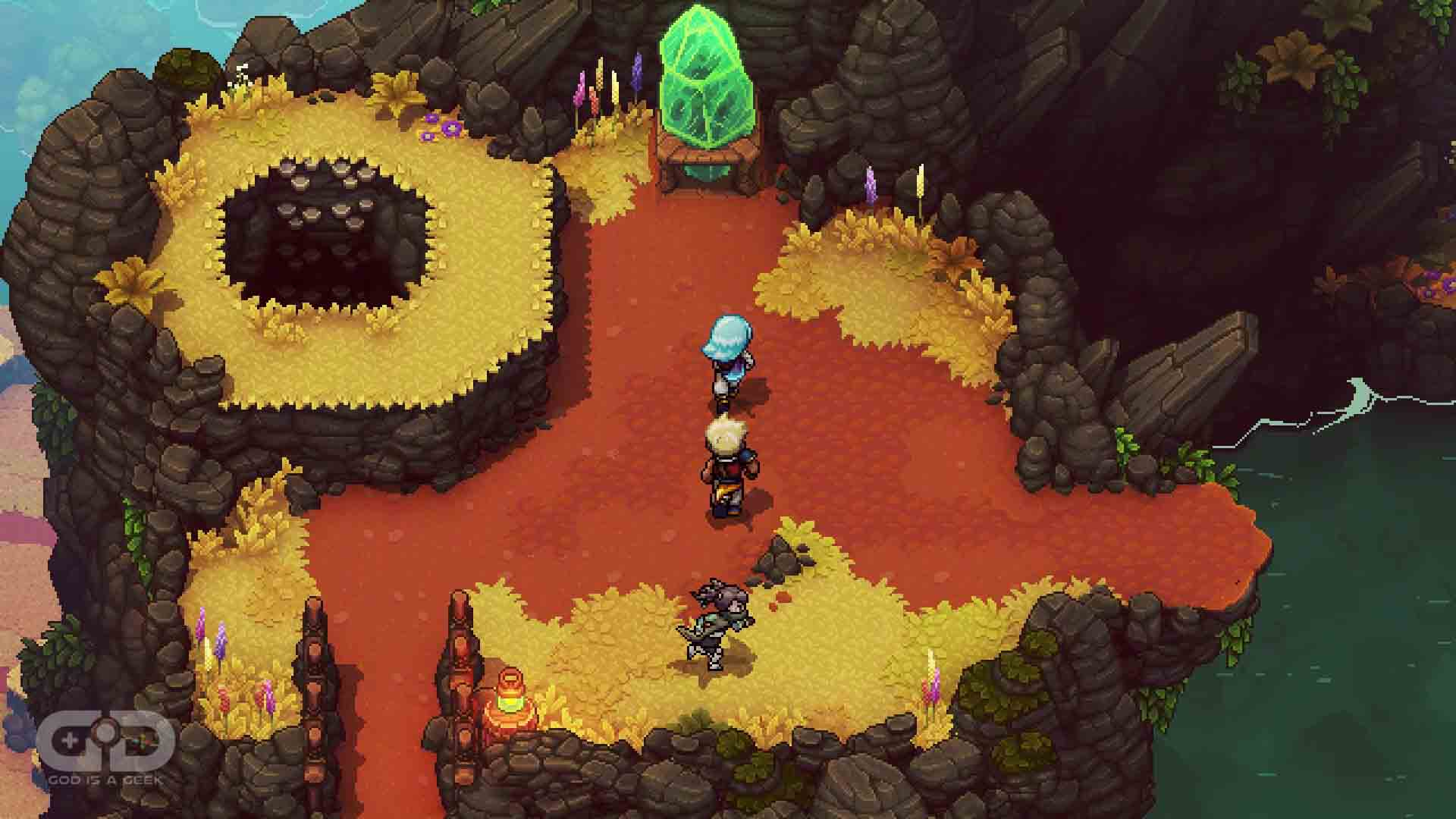
One of my favourite aspects of Sea of Stars are the mini games you encounter throughout, particularly Wheels. How did this surprisingly deep slot machine combat game come to be? Would you ever consider releasing a standalone Wheels game in the same vein as something like Gwent?
Yeah that could be super fun. I can see it happening. What’s fun about it is that it’s been designed so that you could play it against someone. Because what you do is you do a thousand games on paper before you start ordering all the animations and the implementations of the timings, you want to you’ve got something good on your hands. Yeah I think out of the box it would work.
So I’m like the writer and game designer and sometimes these roles feed each other, and the watchmaker was one of those moments. We only show a very small portion of what’s known about the characters, and I think that’s why they can feel consistent. So what I had for the watchmaker is that she took a break from her work and wanted to have fun, so she invented a tabletop game and it’s all the rage and it took the world by storm. So I knew that for her backstory we needed a minigame and I didn’t want it to feel tacked on. So I thought that the thing that she invented should be the thing that’s being played in the taverns, and I was like oof, okay.
Passing it over to my game designer hat, you now need to make a clockwork tabletop game that is actually fun. Part of it comes from Yahtzee, the dice game. I played it a lot with my grandma and I really like the idea of you rolling the dice and then choosing what you keep, and rolling again with up to X amount of rolls, and that’s your combination to do something. So basically wheels is like Yahtzee meets Hearthstone, which is not necessarily what I set out to do, but looking back on it it’s kinda like that. I wanted to get it to be part of this little cosy world, and for that the visuals were really important. With Eric on the sound design front it was like ASMR you know? It’s all clockwork and it has to click as you play, and when a character levels up there’s not just a UI element, the figure actually changes and enters the table and comes back out in a new form. You feel like everything is diegetic, it’s actually part of the narrative world and it’s not just a thing that overlays it.
Also with fishing. One of our tenets is that anything we have to put in the UI means we failed to put it in the world. So for that minigame we wanted to put nothing in the world whatsoever. We’ll give you coach marks so that you know what button you need to press to interact with it, but everything happens in world. Same with the table in Wheels. And from there the idea of attacking each other with heroes and everything, honestly it was kind of easy. We had our first iteration which was way too basic, and it wasn’t fun. And then it kind of informed how we could make everything connect a little more, but it just took two iterations to make it.
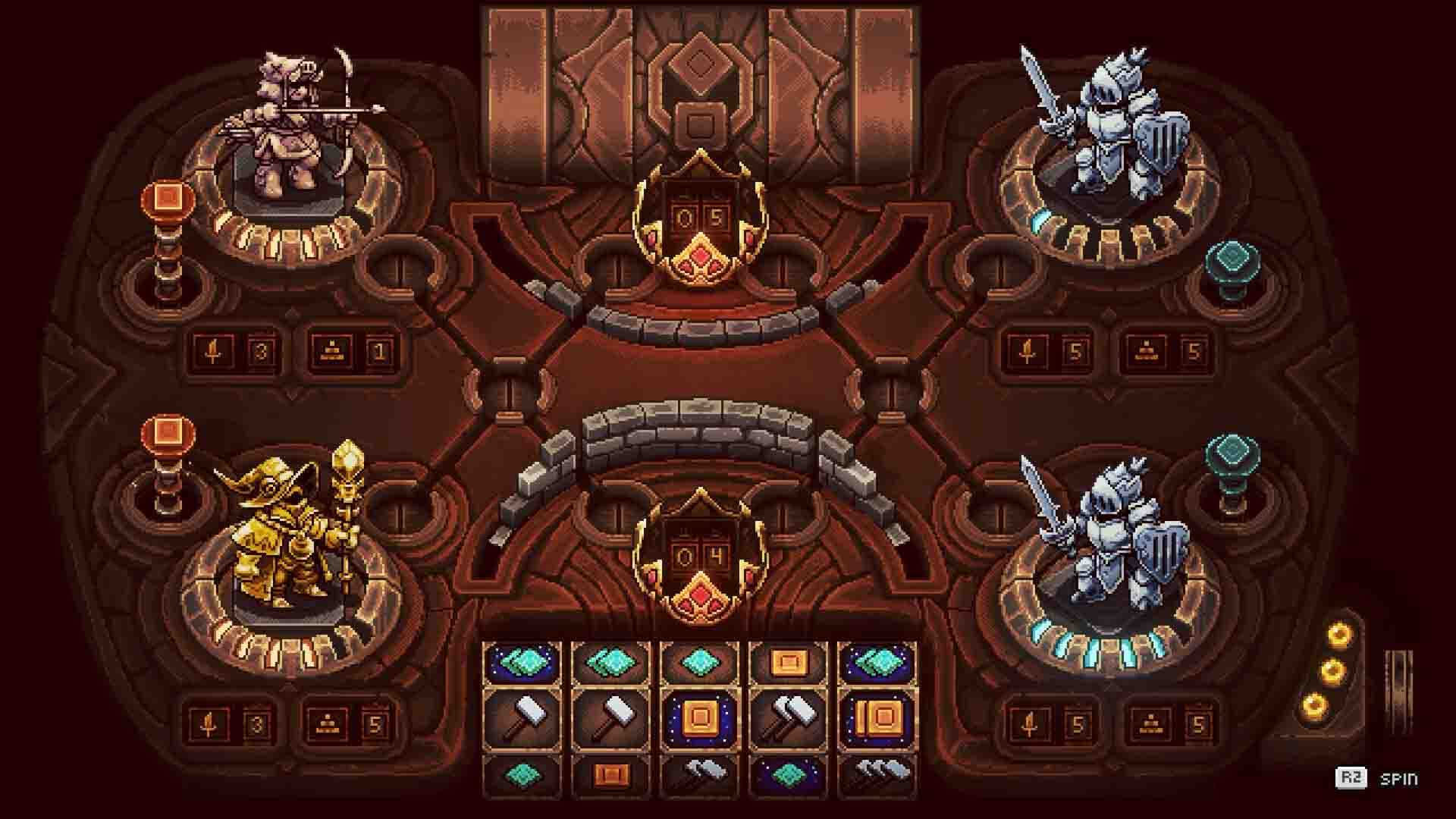
The Sea of Stars soundtrack is absolutely wonderful, and includes some tracks composed by Yasunori Mitsuda. What was it like working with this legendary composer?
Tears were shed. It didn’t happen in as epic a way as you would think. We sent an email to his studio, and he replied. So he got the pitch, he got some our tracks that Eric worked on, and he just kind of said that sounds fun and let’s keep talking. I dunno what part of it was the music, what part of it was the project itself, but he gave a quote to the press about it. “For a reason I don’t fully know, I have to write music for Sea of Stars was the first thought I had when I saw it”. And he went on to talk about how he’s very much aware, I don’t want to misquote him but it was in the spirit of, “the older I get there’s a notion that I’ll only be able to work on a certain number of projects, so I have to pick properly”. It was like, wow. It wasn’t just a yeah sure okay, it was a legitimate intention. And we absolutely saw it in the result. Because we said if you just want to do the one track we’ll be happy, but we could go up to ten. And he said yeah let’s do all ten this sounds fun. He even bought some hardware to emulate his retro sounds. A real treat.
I imagine it’s been tough fitting in gaming time so close to launch, but have you managed to play many other games recently? Is there anything you’re looking forward to playing soon?
Baldur’s Gate 3 for sure. I actually picked up Red Dead Redemption when it came out on PS5, the first one. I’ll try Starfield. My main one is Spider-Man 2, that’s the thing I’m hyped for right now. Oh and Super Mario Wonder and of course the Super Mario RPG remake. Oh my god, I might just play that forever. One of my colleagues, we replay Super Mario RPG many times every year and we’ve done that for over a decade now, and we agreed to each play the new one on our own because we don’t want to have it wait to keep playing. But eventually what we’ll do is get together with both games, both versions of the game, and we’ll hot swap playing the SNES and the new one and we’ll compare like “oh wow this guy isn’t there in this version!”. We just want to pick it apart just because we can.
Thanks to Thierry for his time. Check out our complete guide to Sea of Stars, here.


